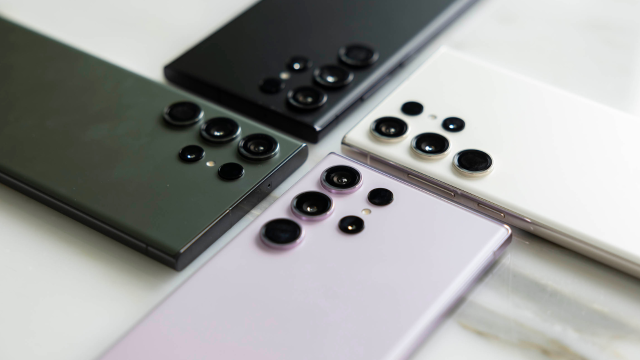Two weeks ago, Samsung announced its new top-of-the-line premium smartphone, the Galaxy S23 Ultra, packed with a camera that has 200 megapixels (MP).
Cameras in smartphones have been getting better for decades, often translating to greater megapixel counts, as technology has been improving and as camera quality has become a greater focus (pun) for consumers.
But what really is a megapixel, at a basic level? Do camera megapixels actually matter to the average user, to the point of making or breaking a smartphone purchase, and do they actually increase the quality of your photos in any meaningful way?
Well… Look, it’s a little complicated.
How many megapixels is good for a phone?
At the most basic level, a ‘megapixel’ is one million pixels, and in the context of photography, a megapixel is a measurement of the camera’s resolution. However, as GSM Arena writes, more megapixels don’t always translate to greater image quality, with other parts of the camera hardware programmed to help out with snaps (for example, light and image sharpening).
Megapixels do, however, often translate to more consistent image quality if printed. Having more megapixels will allow for greater detail across the entire shot, ensuring quality retention when cropping or blowing an image up.
Most big manufacturers don’t usually go for higher megapixel counts, and with most premium smartphones, the phone makers have been prioritising more capable picture-quality hardware and software. Most manufacturers are caring about the quality of the pixels present instead of adding more.
As an example, think of Google’s Tensor chip, which powers the cameras of the Pixel 6 and Pixel 7 range. Additionally, think of Apple’s A16 Bionic Chip that’s found in the iPhone 14 Pro and Pro Max, enhancing the quality of the photos taken.
These phones have lots of extra tech to enhance camera quality, taking the form of, for example, LiDAR, extra sensors, HDR or dedicated photo processing, so it’s not as simple as adding in more megapixels to get a nicer snap.
Plenty of phones have lots of megapixels in their wide cameras, sure, but the (MP) number going up wouldn’t necessarily translate to better photos.
How many megapixels do the best phones have?
Let’s do a camera comparison across the range, bringing into consideration the main wide camera built into the major smartphones available at the time of writing.
- The iPhone 14 Pro Max uses a 48MP camera
- The Google Pixel 7 Pro uses a 50MP camera
- The Samsung Galaxy S23 Ultra uses a 200MP camera.
So, obviously, the odd one out here is the S23 Ultra, but if you’d like to look around, you’d find that other major phone makers typically avoid going higher than 50MP, including Oppo, Sony and Vivo.
If you’d like to see what kind of camera difference can be generated between these phones, we’ve compared the cameras of the Ultra’s 200MP camera against the iPhone 14 Pro Max and the Google Pixel 7 Pro.
“Samsung’s photos are still more saturated than what Google and Apple produce, but the result is less noisy than it used to be. The company has also toned down the sharpening on its photos and figured out how to balance stark sunlight coming in from the side. However, the Ultra is still no match for the Pixel when it comes to nighttime shooting capabilities. Spoiler: the Pixel 7 Pro is still better at shooting photos of stars, at least until I become an Expert RAW mode power user,” Gizmodo’s Florence Ion wrote in her comparison.
We’ve also done a bunch of other side-by-side tests:
- Camera Test: Samsung Galaxy S23 Range vs Google Pixel 7 Pro
- iPhone 14 Pro Max vs Pixel 7 Pro: Which Has the Best Camera, Battery and Experience?
- The Showdown: Google Pixel 6a vs Apple iPhone SE 5G.
If your phone photos matter to you, then give the articles above a read. They’ll give you a good idea of what cameras in different phones offer and what kind of images are produced.
Happy snapping.
